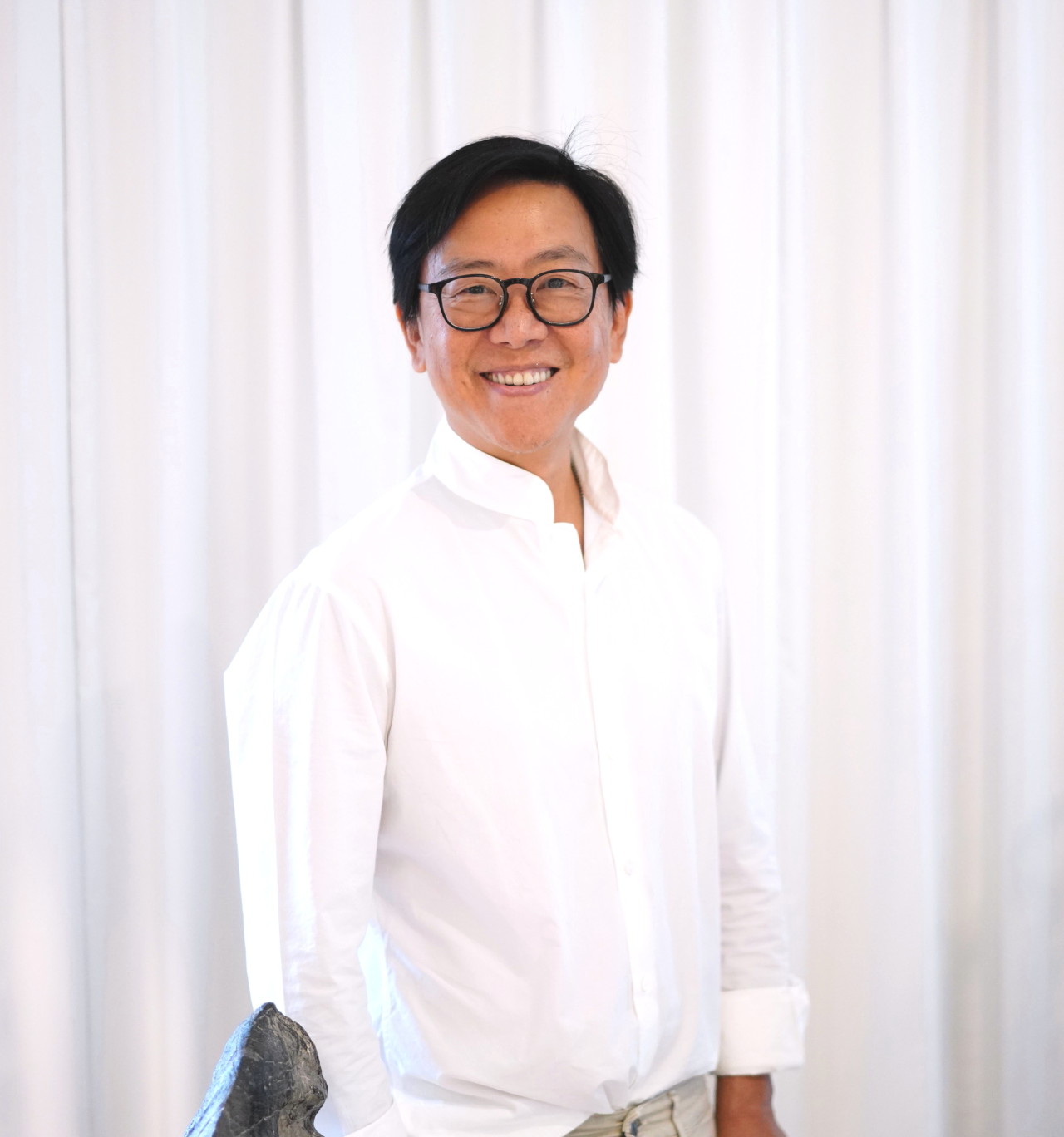William Lim wears many hats. He is a Hong Kong-based architect, artist, art collector and educator, though he is best known for having designed the glass building standing on Hong Kong’s Queen’s Road Central.
Speaking with The Korea Herald after delivering a lecture on art collecting at Seoul Auction Gangnam Center on Monday, Lim said he is a regular visitor to South Korea.
Speaking with The Korea Herald after delivering a lecture on art collecting at Seoul Auction Gangnam Center on Monday, Lim said he is a regular visitor to South Korea.

This time, he went to the historic city of Gyeongju, where he visited Bulguksa, a famous Buddhist temple that dates back to 774. He also visited the studio of local artist Park Dae-sung, one of the few contemporary artists who practice traditional ink-and-wash painting.
Like Le Corbusier, whom he admires, Lim has an affinity for both art and architecture. When he goes to an exhibition, he keenly observes how the artworks go with the surrounding space and building.
At the Yun Hyong-keun retrospective held at Fortuny Museum in Venice this year, for instance, Lim liked the way the works fit with the architecture and the atmosphere.
In his own artworks, too, Lee seems to seek a balance between architecture and art.
Lim, whose six movable furniture pieces are on display at the National Museum of Modern and Contemporary Art in Deoksugung, took the importance of architecture into consideration, as well as the spatial qualities of the old palace, in making and placing the pieces.
Lim said he placed the pieces in the courtyard because he believes people of the past spent a large portion of their daily lives in the open space between royal courts. The indoor space and outdoor space both deserve fair attention, he said.
The practical-minded architect added that he made the furniture movable so that people could use it wherever they wanted.
Practical yet also aesthetically driven, Lim said he appreciates Korean art because he can see “the similarities between Chinese and Korean art, especially the works that utilize traditional elements.”
Lim, who professes to be emotionally attached to Korean art, said he also feels that Korean artists have a strong footing in the Asian art market.
Paik Nam-june was the first Korean artist whose work he got to know. Since then, Lim has collected a wide range of artworks by Korean artists, including Lee Bul and Yang Hae-gue. He also picked Kim Yong-ik as one of his favorite artists.
Earlier this year, Lim curated a group exhibition in Hong Kong titled “Matter,” featuring 18 Chinese artists and six Korean artists.
Lim’s trips to Korea, in part, are a way to see a greater diversity of works than he can in Hong Kong. Though the city has a sizable and trendy art market, Lim feels it lacks diversity. It is difficult to see artworks that are not commercially viable, he said.
“Let’s say, a few years ago, Kusama was very popular that everyone is showing Kusama. I think that it’s just a trend-driven thing, and Hong Kong is that kind of a place. It is very much market driven,” Lim said.
By Shim Woo-hyun (ws@heraldcorp.com)








![[KH Explains] How should Korea adjust its trade defenses against Chinese EVs?](http://res.heraldm.com/phpwas/restmb_idxmake.php?idx=644&simg=/content/image/2024/04/15/20240415050562_0.jpg&u=20240415144419)











![[Today’s K-pop] Stray Kids to return soon: report](http://res.heraldm.com/phpwas/restmb_idxmake.php?idx=642&simg=/content/image/2024/04/16/20240416050713_0.jpg&u=)